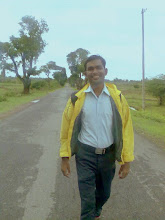Introduction
Human beings are social animals. Without group life they can’t survive in society. Because every individual or group community is dependent on each other. During group interactions every individual presents a different kind of behavior. To control the behavior and to bring essential changes some external or internal force or stimulus is required.
Entrepreneurial motivation training, which helped to bring out inner feelings, talents and set the goals for next coming days. All the participants came up with their achievement plans. A goal is nothing but a set of standards which will be achieved in the future by adding different values through various actions. The instructor was able to see the changes in the thinking of the participants within three days.
Entrepreneurial motivation training is very essential to social entrepreneurs, because it sparkle the minds and stimulates to identify their inner potentials and gives the platform to express their ideas and thoughts.
Description of the Module
This module mainly focused on the treasures which are existing in the surrounding environment. The instructor made all participants to hunt the treasures within the personality. Here treasure means talents or capacities or skills of an individual. Through the “who am I” and self assessment questionnaire all were able to identify the treasures.
Through the goal setting game participants were identified and learnt different perspectives of human behavior. The message of calculated risk taking, understanding the capacity of the individual and influence of environment on the behavior passed on to the participants.
Goal setting should not be influenced by others or by any rewards. The person who takes the moderate or calculated risk should consider his or her capacity, past experiences and the environment. All these factors lead to success. If a person takes a high risk then success may occur by chance or by luck. In case of low risk there may be one hundred percent success. But the wise person has to take moderate or calculated risk, here the chance of success is typically 70-80 percent. During this stage hope of success and fear of failure are essential to an entrepreneur. These factors increase the risk management skills and gives highest satisfaction.
Key points of the module
The purpose of this module is to assess the thinking process of the participants. Through these activities the instructor explained the process of achievement motive and the criterion to score achievement imagery. An achievement situation involves the achievement goal with the standard of excellence. The achievement syndome ( Means set of concepts which are related to achievement motivation) should have the following sub-categories,
· A need (N) to achieve on the part of the person.
· Anticipation of success or failure in attaining the goal.
· Activity (Act) successful or not aimed at attaining the goal.
· Difficulties or blocks (Bp and Bw) to the individuals progress to the goal. There may be personal or external problems.
· Emotional reactions i.e. positive goal anticipation (Ga+) and negative goal anticipation Ga-).
· Help (H) to the striving person from another person.
· Achievement thema, which means the central plot of the whole story, should explain one core goal.
All these factors are called achievement syndrome and very essential in a story to decide the thinking process of the individual.
Major Learnings of the Module
Following are the major learning of the module.
· Every individual has many treasures in their personality.
· He/she has to search and explore the treasures or resources prevailing in the personality.
· Motivation is the stimulation to achieve a goal and it is essential to every individual.
· While setting goals the individual should consider his/her abilities, past experiences, and environment.
· Learn from the success or failure and adopt the leanings.
· During team work we should not create dependency on us nor should I depend on others in each and every activity.
To become a successful entrepreneur all the features of achievement syndrome should prevail in the personality. The entrepreneur must have the fear of failure and at the same time hope of success and have internal and external motivation traits in the personality in a balanced form. All these factors will focus on achieving the goal.
















